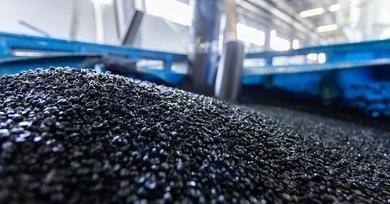The backbone of innovations in manufacturing has been through the innovations of materials. Advanced materials drive the improvement in efficiency, performance and sustainability.
Injection mold design and injection molding manufacturers, in their improvement, very much benefit from such innovative materials. These allow the production of more accurate, durable, and cost-effective molds that ensure enhanced product quality and overall optimization in the production process.
There is a necessity for how the emerging materials can be incorporated into manufacturing. In this article, we will take a look at the upcoming materials in manufacturing.
Advanced Composites
Advanced composites introduce extremely high performance and versatility into manufacturing processes. State-of-the-art materials in manufacturing include:
- Carbon Fiber Reinforced Polymers
- Glass Fiber Reinforced Polymers
- Hybrid composites
1. Carbon Fiber Reinforced Polymers (CFRP).
CFRPs have very high strength-to-weight ratios. They are therefore used in the automotive and aerospace applications, where the requirement to reduce weight is the critical point to achieve desired fuel economies with lower operating costs. Light-weight constructions make it possible to produce high performance in harsh and rugged environments.
On the other hand, CFRP allows the manufacturing of mold of complex geometry. Higher strength and stiffness are permitted on the good part; hence there is the possibility of more detailed and complex designs of molds that could never be executed by use of conventional material. This increases the flexibility and manufacturing process accuracy.
2. Glass Fiber Reinforced Polymers (GFRP)
GFRPs are a more cost-effective material compared to metals, but with a degree of strength and durability. What is great about their cost-performance is that they are good in any structural use, where the balance of performance and finitude of sources is put into consideration.
GFRPs are used in producing a solid yet lightweight piece that, in turn, is used as molds for mold production. In addition, they are more resilient and cheaper than other materials, but are cost-efficient when it comes to cost-performance.
3. Hybrid Composites
Hybrid composites combine a choice of materials to enhance overall performance. Such an integration amalgamation enables manufacturers to tune up the properties of a given composite in validity to the desired needs. Hence, providing tailor-made applications for diversified classes of applications.
The development of such composites is now applied in every industrial area from automotive to sports goods. Their ability to offer tailor-made features is improving technology and continues to expand its use in applied manufacturing.
Smart Materials
Smart materials have revolutionized manufacturing and technology. These function with some of the key properties of shape memory alloys, piezoelectric materials, and self-healing materials.
For example, advanced functionalities and capabilities can help to enhance product performance and increase longevity. The new properties manifest applications across the following:
1. Shape Memory Alloys (SMA)
Shape Memory Alloys retract their original shape as temperature is raised. This shape recovery characteristic makes them most effective in dynamic applications where shape modification and restoration are very important. Their shape capability makes them very useful in varied fields.
SMAs have innumerable applications in actuators, sensors, and medical implants. The adaptability and sensitivity to changes in the environment that SMAs lend them make them suited to the construction of complex systems and precision instruments in aerospace, robotics, and healthcare devices. 2.
2. Piezoelectric Materials
Piezoelectric materials have the property to convert mechanical stress into electrical signals and, vice versa, from them. This property finds use in a wide range of applications in need of adequate control and proper sensing. This helps to make electronic responses possible from mechanical forces, thus allowing the realization of new solutions in technology.
Smart sensors, likewise, act as the eyes and ears behind precision manufacturing. Responsive control and accurate measurements enhance performance in these industrial processes, contributing to improvement in efficiency and product quality.
3. Self-Healing Materials
Self-healing materials are materials that are able to repair themselves following destruction. This property reduces the frequency of maintenance and extends the lifespan of the products, hence a critical tool in the maintenance of operational efficiency.
Maintenance costs will be lowered significantly by the self-healing material and the product’s lifetime increased. Such materials will therefore be very useful where demands are high, for instance, in aerospace and the automotive industries.
Biodegradable and Sustainable Materials
To develop eco-friendly manufacturing, biodegradable and sustainable materials must be used to benefit the environment by reducing pollution and contributing to environmental sustainability. These materials include:
- Bioplastics
- Natural fiber composites
- Recycled materials
1. Bioplastics
Bioplastics are obtained from sources that are renewable, including corn starch and sugarcane. The elements are created to act as a substitution that is preferable – one in which they depend less on fossil fuels compared to regular plastics.
Bioplastics find themselves used in packaging, consumer goods, and other manufacturing areas that need sustainable production. Due to their versatility, along with the environmental benefits, there is an increase in the replacement of the use of traditional plastics in various products.
2. Natural Composites
Natural fiber composites are obtained by integrating fibers, which can be from hemp or flax, with a polymer. This blend gives the material its strength and toughness while still being environmentally friendly when compared to completely synthetic counterparts.
These composites indeed have the upper hand in bringing the total footprint of manufacturing down on the environment. It is a solution characterized by reducing the use of synthetic materials and substantially minimizing the amount of waste produced.
3. Recycled Materials
Recycled materials refer to products that are made of post-consumer and post-industrial contents. This is very crucial since it correctly closes the loop and excellent manufacturing cycle, and this process ensures that the use of new virgin raw materials is significantly reduced, thus ensuring efficiency in the utilization of given resources.
Using recycled materials in production further stimulates the promotion of circular economic activities. Manufacturing activities help in reducing waste generation, thus conserving a considerable resource. This is very important for future sustainability since environmental effects on the environment are simultaneously reduced.
High-Temperature Alloys
High-temperature materials are essential for all applications that need materials to perform at high-stress conditions with maximum potential. In this regard, two groups of materials show incredible performances:
- Superalloys
- Advanced ceramics
1. Superalloys
Currently, these nickel-based materials are developed in such a manner to withstand high temperatures and hostile environments. These materials are paramount to applications where both performance and considerations are on safety consciousness. Their chemical composition allows these materials to retain strength; therefore, they resist deformation under severe conditions.
These find very extensive use in the aerospace, power generation, and automotive industries. The strength properties make them essential for high-temperature working components-installed turbine blades, engine components, and other critical systems. For instance, advanced ceramics ensure functional effectiveness and safety in challenging surroundings.
2. Advanced Ceramics
Advanced ceramics, in particular, show excellent resistance at high temperatures, apart from the normal expectation of high durability. They are designed to work under high thermal and mechanical stresses with a normal loss of integrity, which makes them very suitable for use in most environments that may challenge conventional materials.
Such ceramics are used as aerospace components, in electronics, and in medical implants. Their high degree of thermal stability and durability allows for these advanced ceramics to be used in instruments and systems operating under extremely severe conditions for guaranteed proper performance and lifetime.









